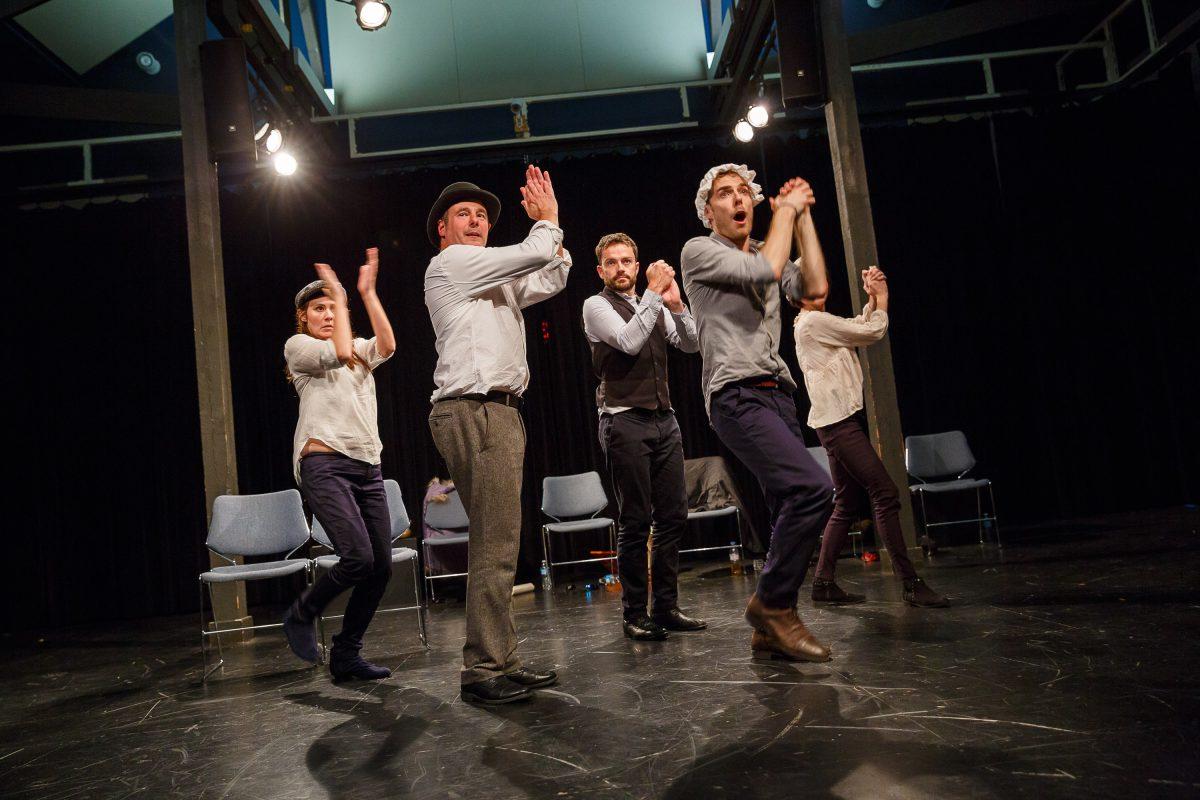The curtains open to show a stage – empty except for a row of chairs. We see five actors, nondescript costuming and a handful of props.
In a show as aesthetically minimalistic as the Actors from the London Stage (AFTLS) production of Shakespeare’s “A Midsummer Night’s Dream,” everything is in the acting. Every little detail counts.
Performing a Shakespearean comedy featuring more than twenty characters with only five actors sounds chaotic—and it is. But in this production, it actually works, thanks to the clever and careful use of staging and brilliant performances from all five actors, who used everything from cadence and accent to posture and movement to distinguish between their characters.
Ffion Jolly and Claire Redcliffe convincingly alternated between being lovestruck young nobles (Helena and Hermia, respectively), cool, collected queens (Hippolyta and Titania) and clueless day laborers. Patrick Moy commendably portrayed both the staunchly rational Theseus and the chaotic Puck, while Chris Donnelly successfully handled some of the more difficult staging, playing both Demetrius and Egeus as well as Bottom. Samuel Collings displayed a particularly impressive vocal range, from a deep, Benedict Cumberbatch baritone (Oberon) to a chipmunk-like squeak (Thisbe).
Lighting was put to good use in some of the more mystical “fairy world” scenes and in those involving the troupe of amateur actors often referred to as the Mechanicals. Props were used sparingly but effectively, especially in the chaotic and uproariously funny fifth act featuring the hysterically dreadful play-within-the-play “The Most Lamentable Comedy and Most Cruel Death of Pyramus and Thisb,” where every actor was portraying two or more characters present on stage simultaneously. Though the costuming was nondescript, accessories were used to help differentiate between characters: Oberon had a trench coat, Titania a fur vest, the Mechanicals all wore caps. Bottom’s iconic snout and ears also made an appearance, though the wire frame gave the whole thing a very muzzle-like appearance. Then again, considering Bottom’s character, a muzzle probably wouldn’t be a bad idea.
Of course, because of its minimalism and the iconic nature of the play, every little variation from the norm becomes that much more important, and nowhere does this production stray from the norm more than it does in its portrayal of Puck. Usually depicted as an impish trickster, Patrick Moy’s portrayal of Puck goes down a darker road – less Oberon’s prankster sidekick and more Oberon’s bitter servant. While not the best for laughs—Puck’s palpable anger with his own situation was borderline frightening at times, an intriguing and compelling choice.
Moy’s Puck also has a decidedly Irish accent, a stark contrast to the RP English accents of both the fairy royals and the human nobles. If Puck was being portrayed in a more traditional manner, the accent would serve as a cliche but obvious allusion to a leprechaun. However, with Puck’s mischievous side so downplayed, that illusion disappears. What is left instead is an ambiguous but vaguely political statement that’s not only distracting, but a little too on the nose to be entirely comfortable, especially in a production by a London-based theater company.
However, a few questionable choices do not negate a multitude of superb ones. The AFTLS production of “A Midsummer Night’s Dream” remained faithful to Shakespeare’s text while still managing to keep it fresh and interesting for the entirety of its two-hour 45-minute runtime—a commendable achievement and a pleasure to watch.
Photo courtesy of Notre Dame University



